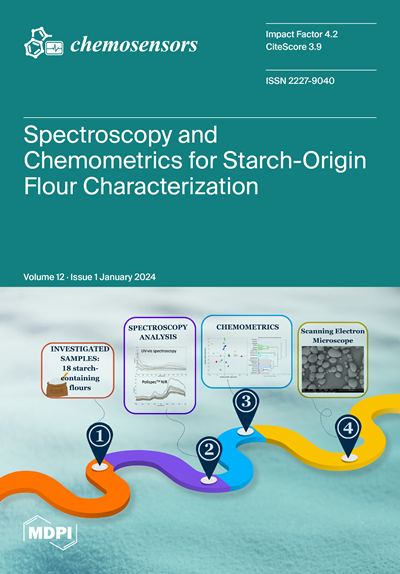用化学传感、人工智能和纳米建筑学的前瞻性贡献进行疾病诊断
IF 3.7
3区 工程技术
Q2 CHEMISTRY, ANALYTICAL
引用次数: 0
摘要
在现代材料研究中,纳米技术将发挥改变游戏规则的作用,纳米建筑学是该领域的总体集成商,而人工智能作为超级加速器加速了它的进展。我们将讨论如何在特定的应用环境中使用这种模式,并举例说明如何使用疾病诊断。在本文中,我们着重于早期,无创疾病诊断作为目标应用。特别回顾了化学传感在癌症和帕金森病检测中的最新趋势。随着动态挥发性代谢物谱越来越多地与疾病发病相关,这一概念得到了越来越多的关注,使其成为疾病早期阶段有希望的诊断工具。我们还讨论了纳米结构化学传感器的进展,这在理论上是诊断化学传感设备的理想形式因素。最后但并非最不重要的是,我们在最近的工作中突出了人工智能(AI)的崛起和新兴贡献,这些工作阐明了化学传感与AI之间的强大协同作用。纳米结构化学传感器和人工智能的强大结合可能会挑战我们目前的疾病诊断观念。疾病诊断和新出现病毒的检测是社会面临的重要挑战。先进的传感功能材料的并行开发是支持和使人工智能方法在应用中实现技术飞跃的必要条件。纳米建筑学的材料和结构形成技术是应对这些挑战的关键。本文章由计算机程序翻译,如有差异,请以英文原文为准。
Disease Diagnosis with Chemosensing, Artificial Intelligence, and Prospective Contributions of Nanoarchitectonics
In modern materials research, nanotechnology will play a game-changing role, with nanoarchitectonics as an overarching integrator of the field and artificial intelligence hastening its progress as a super-accelerator. We would like to discuss how this schema can be utilized in the context of specific applications, with exemplification using disease diagnosis. In this paper, we focus on early, noninvasive disease diagnosis as a target application. In particular, recent trends in chemosensing in the detection of cancer and Parkinson’s disease are reviewed. The concept has been gaining traction as dynamic volatile metabolite profiles have been increasingly associated with disease onset, making them promising diagnostic tools in early stages of disease. We also discuss advances in nanoarchitectonic chemosensors, which are theoretically ideal form factors for diagnostic chemosensing devices. Last but not least, we shine the spotlight on the rise to prominence and emergent contributions of artificial intelligence (AI) in recent works, which have elucidated a strong synergy between chemosensing and AI. The powerful combination of nanoarchitectonic chemosensors and AI could challenge our current notions of disease diagnosis. Disease diagnosis and detection of emerging viruses are important challenges facing society. The parallel development of advanced functional materials for sensing is necessary to support and enable AI methodologies in making technological leaps in applications. The material and structural formative technologies of nanoarchitectonics are critical in meeting these challenges.
求助全文
通过发布文献求助,成功后即可免费获取论文全文。
去求助
来源期刊

Chemosensors
Chemistry-Analytical Chemistry
CiteScore
5.00
自引率
9.50%
发文量
450
审稿时长
11 weeks
期刊介绍:
Chemosensors (ISSN 2227-9040; CODEN: CHEMO9) is an international, scientific, open access journal on the science and technology of chemical sensors published quarterly online by MDPI.The journal is indexed in Scopus, SCIE (Web of Science), CAPlus / SciFinder, Inspec, Engineering Village and other databases.
 求助内容:
求助内容: 应助结果提醒方式:
应助结果提醒方式:


